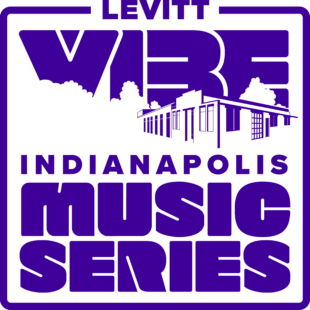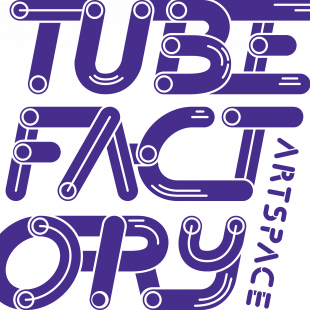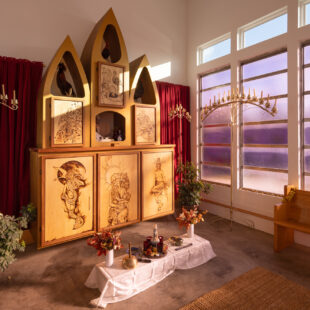The Indianapolis Bee Sanctuary — completed as a locally sourced and built functional public art sculpture in August of 2018 — has brought a very unique functional sculpture providing natural beauty and environmental/natural learning opportunities to visitors of all backgrounds in a green space in a historically mixed-use industrial and residential block in the Garfield Park neighborhood just south of Downtown Indianapolis.
This project was made possible by The Andy Warhol Foundation for the Visual Arts, PNC Bank, the Indiana Office of Community and Rural Affairs (OCRA), Penrod Society, and MHS Health. See photos of Indianapolis Bee Sanctuary here and photos from the opening of the exhibit and first visits to the sanctuary here.
Juan William Chávez — an artist and cultural activist based in St. Louis and vision behind the bee sanctuary — led the project and created work for an exhibition during his six-week residency at Tube Factory. This exhibition, in Tube Factory’s main gallery for three months, highlighted the project’s process and connected back to the artist’s Peruvian heritage. The Indianapolis Bee Sanctuary promotes environmental stewardship with the philosophy that a better environment for bees is a healthy environment for humans. This is fostered through Chávez’s pollinator-friendly hexagon design and is associated with a multi layered community outreach program.
The Bee Sanctuary features a multi-color hexagon pattern concrete floor that houses two beehives. Surrounding the hives is a hexagon-shaped cedar eco wall filled with organic soil and is filled with an abundance of native plants and flowers for bees throughout the seasons. The Bee Sanctuary has embraced the concept of working as a hive. Chávez teamed up with Bee Public, Solful Gardens and TeenWorks on the construction of the sanctuary. TeenWorks is a six-week summer employment and college readiness program for high school seniors. Along with helping build, TeenWorks young people experienced several educational workshops that focus on ecology, plant biology, landscape design, beekeeping, and entrepreneurship.
We purchased cedar from southern Indiana and Indiana native plants from a local business in Bloomington. We paid seven local adult artists and included six paid teenagers — four part of TeenWorks and two others from the neighborhood. This project, which also launched first-phase programming with an exhibit at Tube Factory, artist talk, and guided visits to the bee hives on First Friday and throughout open hours in the fall, has begun providing culinary and agricultural education in the near southeast Indianapolis urban core, centering around bees and their role in our food production. This work will happen on an ongoing basis with public programming rolling out over the next five years. The sanctuary will continue to accompany several raised garden beds and the home of 15 chickens in Big Car’s developing green space that will be further improved with lighting, a path, and additional plantings and art as part of a $3 million grant from Lilly Endowment focused on houses and buildings surrounding this commons area. Big Car is excited that the Indianapolis Bee Sanctuary — made possible with your support — will be part of this very impactful project on an ongoing basis for many years to come.
In Tube Factory’s main gallery, Chávez exhibited Mesa Hive, a multimedia Installation that highlighted the process and construction of the Indianapolis Bee Sanctuary. The installation was presented on a large Mylar survival blanket with carefully arranged objects and artifacts created and harvested during the construction process. These objects were juxtaposed with new paintings made by Chávez during the residency. The survival blanket was inspired by Chávez’s Peruvian heritage and references Mesa, a multicolored bundle containing various sacred objects used for healing in Andean shamanic rituals typically associated with a Huaca, a monument or natural location that represents something revered. The exhibition also included photo and video documentation of TeenWorks, Chávez, and Big Car artists working on the sanctuary.
While the Indianapolis Bee Sanctuary was completed as a physical structure on August 3, 2018, we want to wait and celebrate with an official ribbon cutting and grand opening in April of 2019. By this time, the native plants will be grown in and we will be able to announce our ongoing programs connected with the sanctuary. We will be sure to invite OCRA leadership along with our other partners and funders well in advance of this event.
Public programming continues over the next five years related to the Bee Sanctuary. The Bee Sanctuary will continue to invite the public to wear beekeeping suits to observe and interact with the hives through a multi-layered community outreach program that embraces the urban ecosystem, arts education and job training.
The Indianapolis Bee Sanctuary will be the focal point of our educational programming at Tube Factory artspace. We will be bringing in different local beekeepers who will talk about bees, their role in our environment, the bee-keeper’s personal style of bee-keeping, and offering cooking classes.
We are pleased to have built the pollinator-friendly, chemical-free sanctuary and are forming multi-layered community outreach programming. TeenWorks helped us build the sanctuary and will continue to be involved in it during the summer of 2019.
Currently, many adults and children our area struggle with food security and health. Many aren’t aware of the environmental importance of bees in our ecosystem. The Indianapolis Bee Sanctuary and expanded associated programming will start in spring of 2019 to help show where food comes from, how it is produced, and how Indianapolis residents can keep bees and grow food. While we have already reached more than 2,500 visitors — of diverse backgrounds and ages — at this green space at Tube Factory — this project’s impact will grow exponentially as a permanent part of our grounds where we expect to host more than 20,000 people each year.



